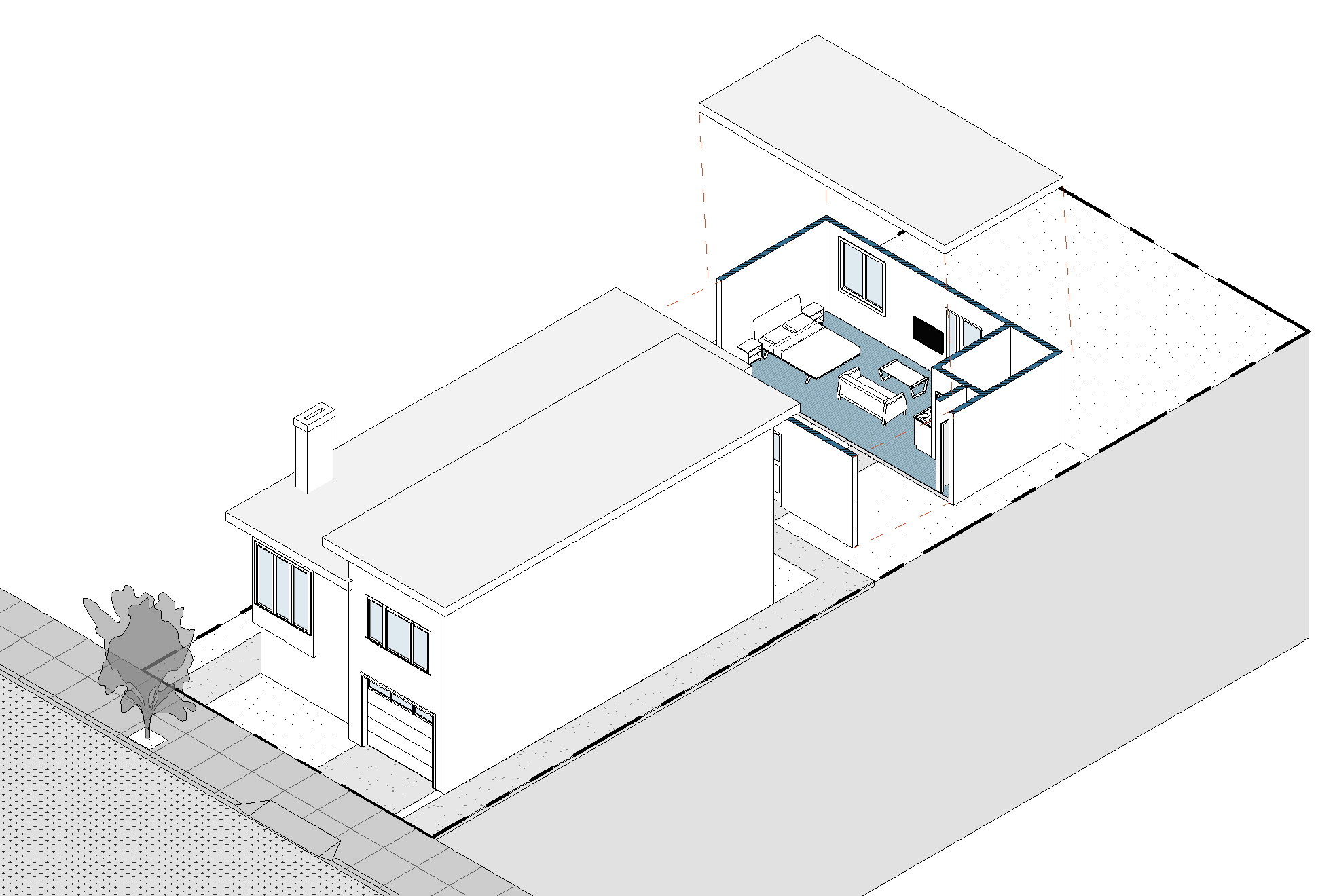THINKING: construction housing projects
Urban Lot Split, No. of Units Allowed, and ADUs in Los Angeles: What you need to know about SB 9

Senate Bill (SB) 9 took effect on January 1, 2022 to help alleviate the housing crisis in California. The new law allows homeowners to build a two-unit development on their single-family zoned lot, as well as the ability to split their parcel – also known as Urban Lot Splits. However, certain criteria need to be met on these lots in order for homeowners to be able to utilize this law and maximize the financial benefit of their property.
In our previous SB 9 blog post, we provided an overview of the new California law. The goal of this blog post is to breakdown the memo published by the city of Los Angeles for homeowners interested in looking into this for their own homes, and explain (in some detail) the requirements for parcels to qualify for urban lot split, and/or adding additional units (including ADUs and JADUs.)
What are the location requirements for a property to qualify for SB 9?
- Located in a Single-Family Zone
The parcel should be zoned for single-family use only (no commercial or mixed-use lots are allowed) which includes the following Zones: A1, A2, RA, RE, RS, R1, RU, RZ, and RW Zones. - Not located in the following prohibited sites
Hazardous waste sites, wetlands, floodways, floodplains, habitat areas for certain species, conservation areas, or certain historic sites (Note: Projects located in Very High Fire Hazard Severity Zones and earthquake fault zones may be permitted in certain cases) - Parking Requirements
Not more than one parking space per unit may be required. However, no parking will be required if the parcel is located within ½ mile walking distance from a high-quality transit corridor, a major transit stop, or if a car-share vehicle drop off or pickup location is located within one block away from it.
What are the objective standards and building code requirements?
- Objective standards
Local agencies may apply objective zoning, subdivision or design review standards as long as those standards comply with the criteria mentioned below and does not physically preclude the following:
-Up to two primary units on one parcel, or up to two primary units on each of the resulting parcels, in the case of a lot split.
-At least 800 square feet in size for each primary unit
- Connected or Adjacent Structures
-An attached (or connected) two-unit development is permitted on one lot.
-In a SB 9 urban lot split case, zoning regulation regarding space between buildings won’t apply to a project only because it proposes adjacent structures, as long as the structures comply with building code safety standards and allows separate conveyance
- Setback
A maximum of 4 ft side and rear setback can be applied. However, existing structure or a replacement structure constructed in the same location with the same physical dimensions as a legally existing structure would not require setbacks.
What are the requirements that each unit must meet under SB 9?
- Demolition or Alteration
Affordable or rent controlled housing or units that have been occupied by a tenant in the last three years, can’t be demolished or altered - Unit Size
Each unit should not be less than 800 square feet. - Short Term Rentals
Units created under SB 9 are not allowed to be rented for a period less than 30 days. However, rentals under 30 days are allowed for residents living in these units and are able to participate in the City of LA Home Sharing Program. - On-site Wastewater Treatment
Units that are connected to a septic system on site must have a percolation test completed within the last 5 years, or, within the last 10 years if the percolation system has been recertified.
What are the SB 9 Urban Lot Split requirements?
- Lot Split
Homeowners are allowed to split their single-family parcel into no more than two new parcels with an approximately equal lot area (60/40 split at most) - Lot Area
The two newly splitted lot areas can not be under 1,200 square feet - Two Unit Maximum, Including ADUs and JADUs
No more than two units are allowed on each parcel created through an Urban Lot Split. (more details below) - Residential Use
A lot created by an Urban Lot Split may be used for residential units only. - Owner Occupancy
Homeowners applying for an Urban Lot Split must sign an affidavit stating their intention to live in one of the resulting units for a minimum of 3 years.
Can homeowners add an Accessory Dwelling Units (ADUs), Junior Accessory Dwelling Units (JADUs) or more than two units on a lot under SB 9?
The short answer is, it depends. Primary residential units can be combined with ADUs for the maximum unit counts provided under SB 9 (up to four units). The number of units on each lot depends on whether a lot split is involved, so here are the two cases:
- In case of an Urban Lot Split
The max number of units on each lot resulting from an urban lot split is two units. Those two units can either be two primary residential units, or a combination of all three unit options (primary unit, ADU, or JADU). - No Lot Split
In this case, it is allowed under the ADU law to add an ADU or a JADU on a lot, in addition to one OR two primary units that are allowed under SB 9.
There are multiple constraints that come with SB 9. However, the law aims at giving homeowners control of their property’s finances. If you read this post and believe that your property falls under all the requirements for either a two-unit development or an urban lot split, contact us and we would be happy to assist you.